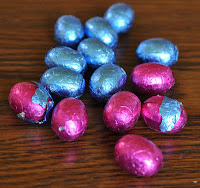One of the nice things about living in such a zuinig country is that there are sewing machine shops in just about every city. I've seen them in Leiden and Maastricht, and here in Nijmegen there are two that I know of. It always surprises me, a bit, when I see that they are not going out of business, and that they are actually doing well enough selling €600-machines that they stay open. Actually, I suspect that most of them fill their bottom lines doing maintenance work on older machines--I've used the services of our local store twice now. €54 to have someone take apart, clean out, and oil my little dinky Singer is probably not quite frugal, but I would be devestated if I accidentally broke something in it.
That being said--sewing isn't quite the money-saver some people make it out to be. The only reason it's worthwhile for us is that I have the time and patience to stalk the fabric vendors on Mondays, and that most of our fabric needs aren't especially fussy about the type of fabric I need to use. Anything woven that will hold a stitch, basically, will suffice for curtains and bags, and almost anything that's not shiny and vaguely cotton-ish will do for aprons.
But when you start getting into things like diapers, blankets, and clothes, fabric quality matters a lot more. For clothing, it needs to be comfortable and breathable. For diapers, you need absorbency, which pretty much eliminates 99% of the fabrics sold in the markt. You might want something to drape a certain way. You might want something that has certain thermal properties. And all of these qualifications are costly. Flannel is an arm and a leg, at €11/m. Cotton fabrics start at €5/m, and €7-8 is more normal. Wool is a heartstopping €15/m. In other words, by the time you start factoring in the extra cost of thread and fasteners, it's quite clear that you'd be better off rumaging through the C&A, unless you're that good that custom clothes always look smashing.
And then there is the cost of the paraphrenalia surrounding sewing: things like a cutting board are nice to have if you're going to do a lot of sewing. A dummy to dress up is handy if you're looking into making your own clothes. A good set of fabric shears is a must if you don't want crippling carpal tunnel syndrome or blisters on your thumbs. If you're doing a lot of fancy work, a variety of presser feet might be necessary. A stitch-remover is handy, though I've found that the smaller blade on my Victorinox does the trick quite well, tooAnd if you need a serger...But perhaps the most expensive of all things is experience--either in the form of lessons, or trial-and-error, or a bit of both.
I guess that's why I keep my sewing machines around: I've learned too much to just let it all go simply due to inconvenience. That, and even curtains from the HEMA can be quite expensive.
And then there is the cost of the paraphrenalia surrounding sewing: things like a cutting board are nice to have if you're going to do a lot of sewing. A dummy to dress up is handy if you're looking into making your own clothes. A good set of fabric shears is a must if you don't want crippling carpal tunnel syndrome or blisters on your thumbs. If you're doing a lot of fancy work, a variety of presser feet might be necessary. A stitch-remover is handy, though I've found that the smaller blade on my Victorinox does the trick quite well, tooAnd if you need a serger...But perhaps the most expensive of all things is experience--either in the form of lessons, or trial-and-error, or a bit of both.
I guess that's why I keep my sewing machines around: I've learned too much to just let it all go simply due to inconvenience. That, and even curtains from the HEMA can be quite expensive.







